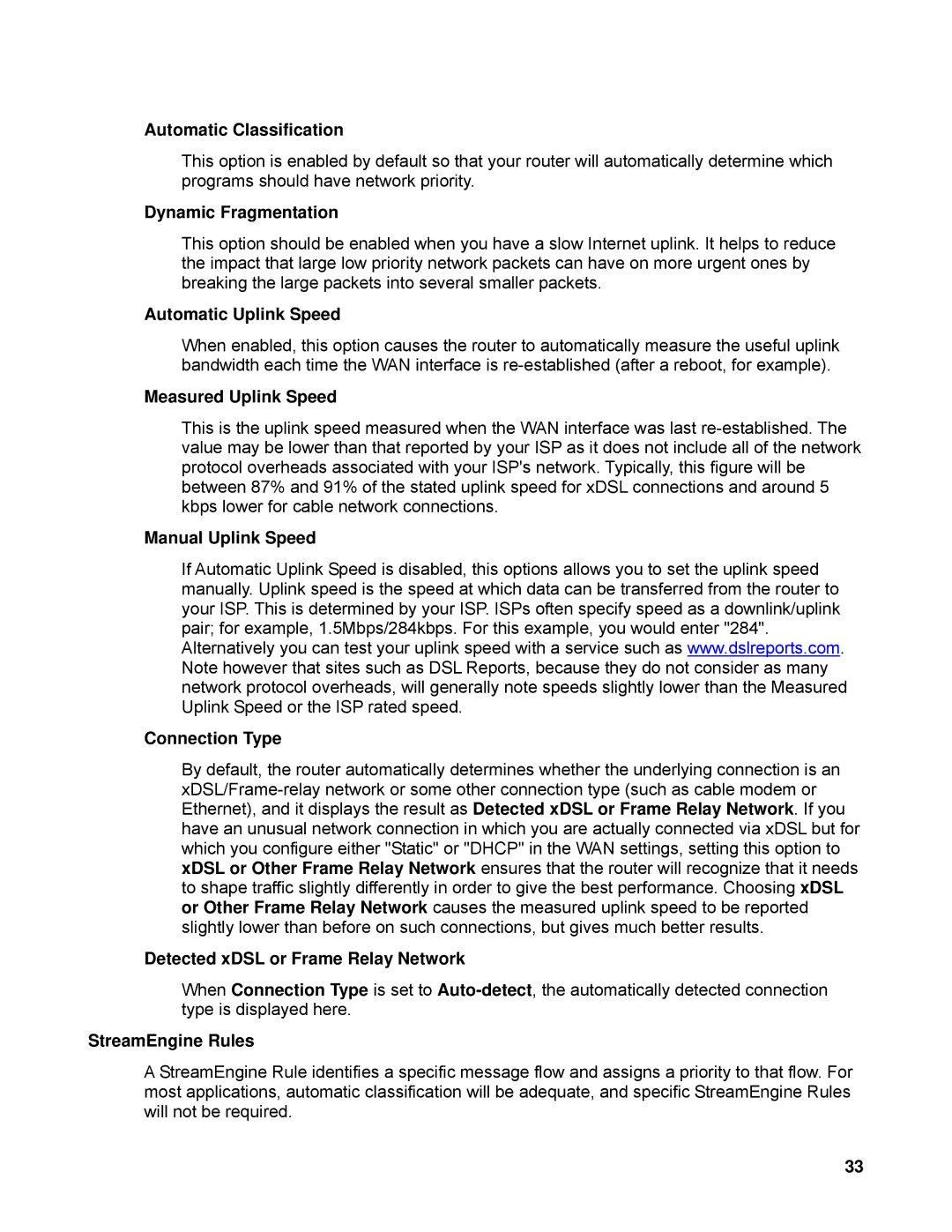TEW-633GR specifications
The TRENDnet TEW-633GR is a versatile wireless router that caters to both home and small office environments, providing reliable connectivity and performance. With its sleek design, the TEW-633GR stands out as a functional device that ensures users can enjoy high-speed internet access across various devices.One of the main features of the TEW-633GR is its dual-band support. This router operates on both the 2.4GHz and 5GHz frequency bands, allowing users to take advantage of the less congested 5GHz band for activities requiring higher bandwidth, such as streaming and online gaming, while still maintaining compatibility with devices that only use the 2.4GHz band. This dual-band functionality enhances overall network performance and minimizes interference from other wireless devices.
The TEW-633GR delivers impressive wireless speeds, supporting the 802.11n wireless standard with speeds of up to 300 Mbps. This makes it an excellent choice for environments where multiple devices are connected simultaneously. Additionally, the router features three external antennas that help extend the wireless range and improve signal strength, ensuring consistent internet access throughout larger spaces.
In terms of security, the TRENDnet TEW-633GR offers several robust features to safeguard the network. It supports WPA/WPA2 encryption protocols, providing secure access to the wireless network while protecting sensitive data from potential intrusions. The integrated firewall adds an extra layer of security, helping to prevent unauthorized access and attacks.
Installation and setup of the TEW-633GR is user-friendly, with a web-based interface that guides users through the process. The inclusion of WPS (Wi-Fi Protected Setup) allows for quick and easy connections of compatible devices at the push of a button, eliminating the need for complicated configurations.
Moreover, the router incorporates Quality of Service (QoS) settings, which enable users to prioritize bandwidth allocation for specific applications or devices. This feature is particularly beneficial for households or offices with high demands on their internet connection, ensuring that critical tasks receive the necessary bandwidth to function optimally.
Overall, the TRENDnet TEW-633GR combines speed, reliability, and security, making it an ideal solution for users looking to enhance their wireless networking experience. Its dual-band capabilities, ease of installation, and robust security features contribute to its appeal as a modern router suited for diverse internet needs.
